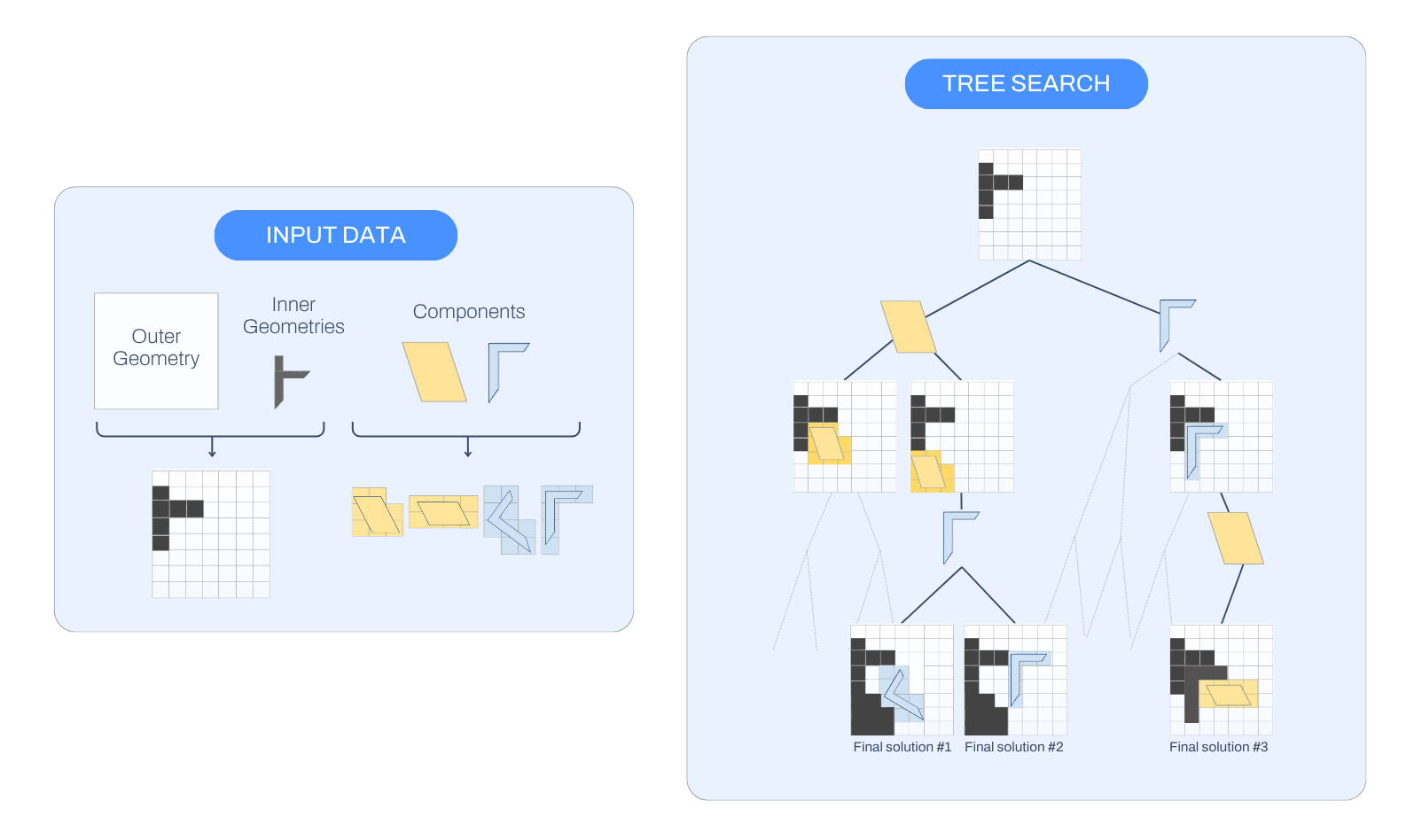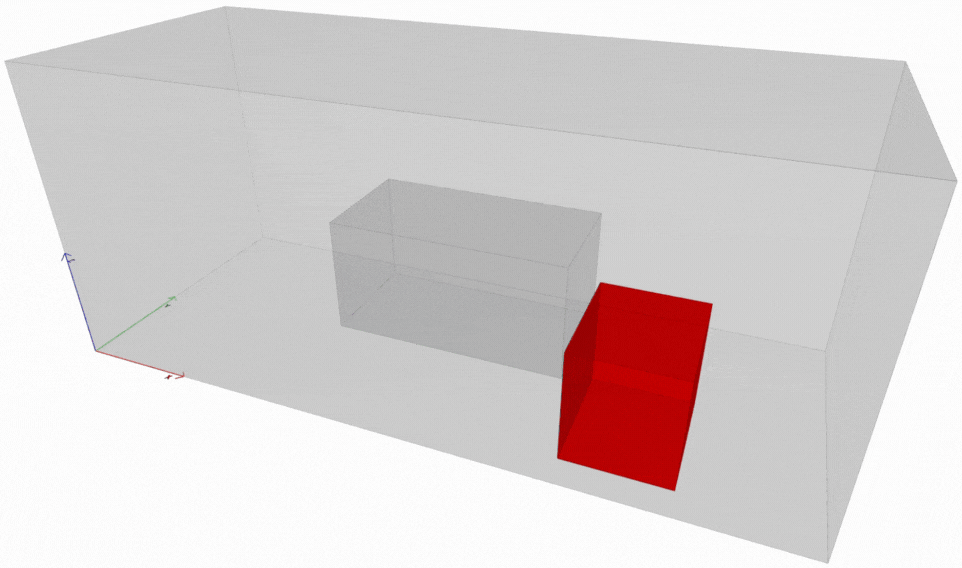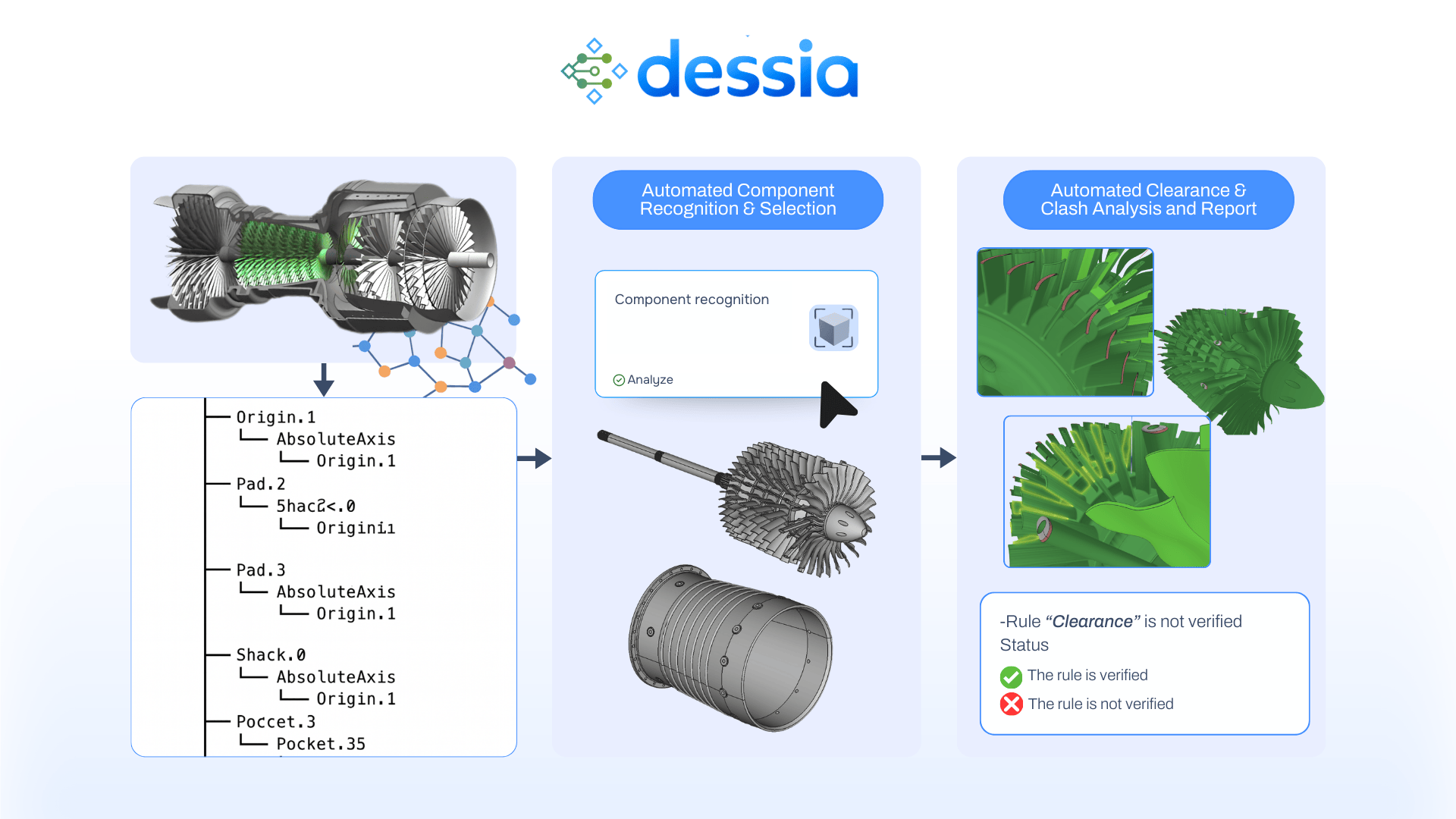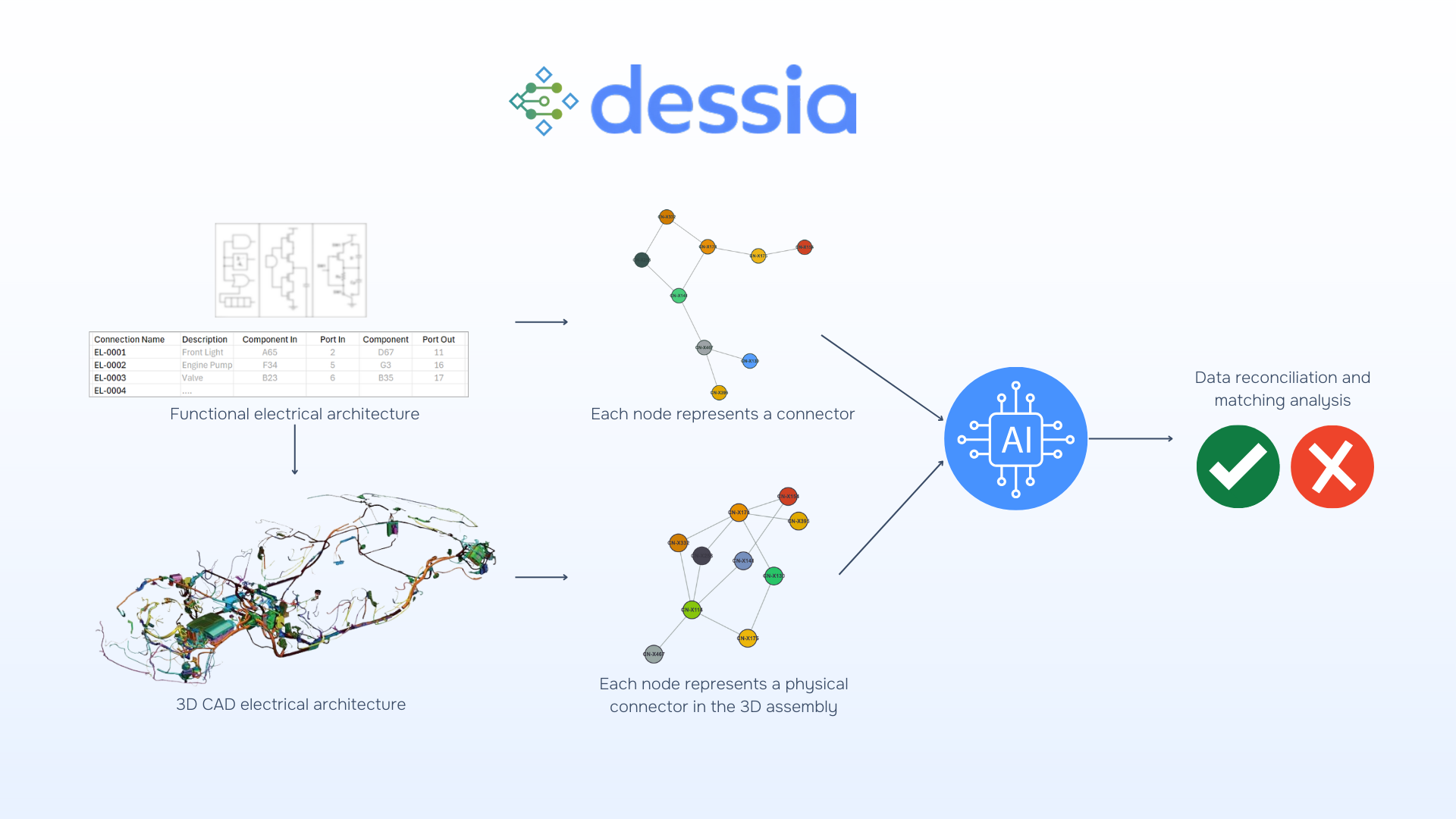AI-Driven 3D Layout Generation for Complex Installations
Discover how Dessia’s AI Layout Generation App transforms mechanical design workflows. By automating 3D component placement with rule-based reasoning and geometric intelligence, engineers can explore dozens of constraint-compliant configurations in hours instead of days — accelerating design cycles and unlocking smarter, data-driven engineering decisions.
As mechanical installations become more complex and functionally integrated, engineers face growing challenges in fitting multiple components within limited 3D spaces. Whether designing a modular nuclear reactor, a ship piping system or optimizing warehouse and logistics layouts, the layout design phase often becomes a major bottleneck.
Traditionally, design engineers rely on manual placement and iterative CAD adjustments to find configurations that satisfy geometric and functional constraints — clearances, alignments, accessibility, and integration rules. This process is not only time-consuming but also limited in scope : only a few configurations can be explored within project deadlines, leaving many potentially better solutions unexplored.
To overcome this limitation, Dessia developed an AI-powered layout generation library that automatically produces multiple valid 3D component placements within a defined environment. The system combines deterministic algorithms and geometric reasoning to generate a wide range of geometrically valid, constraint-compliant configurations — helping engineers identify the most suitable configurations early in the design cycle.
Managing design complexity in multi-constraint environments
In complex mechanical systems, the layout definition phase is one of the most demanding steps of the design process. Engineers must integrate multiple components, often with strict geometric, functional, and safety constraints, inside tight, irregular environments — a core challenge addresses by AI in mechanical design and model-based engineering.
The task is rarely limited to geometry alone. Every placement decision can affect routing paths, mounting accessibility, thermal behavior, or safety clearances. This makes layout generation a multi-disciplinary, multi-constraint problem, where purely manual iteration quickly becomes unmanageable.
Moreover, as the number of components increases, the design space expands exponentially, turning what was once a straightforward CAD exercise into a combinatorial exploration challenge. In dense environment such as reactor compartments or vehicle bays, even small changes in component order can lead to completely different assembly outcomes.
This complexity leads to:
- Lengthy design cycles and repetitive CAD manipulation
- High risk of overlooked interferences or unverified clearances
- Limited exploration of viable topologies due to time constraints
The objective was to replace the traditional, sequential layout process with a systematic, rule-based exploration method that enables engineers to identify and compare all physically consistent configurations early in the design phase.
AI-driven layout generation based on rule-based reasoning and geometric intelligence
Dessia’s solution automates the definition and assessment of 3D component layouts within mechanically constrained environments. Instead of manually testing each configuration in CAD, engineers can define geometric and functional constraints — such as clearances, orientations, and accessibility rules — while the system systematically explores, evaluates, and prioritizes all feasible arrangements that comply with these requirements using AI for design automation.

The approach captures engineering logic rather than pure geometry. It accounts for mechanical factors like:
- Structural boundaries and usable volumes
- Mounting directions, alignment, and fixation areas
- Anticipated routing paths for cables, pipes, or ducts
- Accessibility for maintenance or assembly operations
The method investigates several possible topological arrangements of components, analyzing how parts can coexist and interact within the available volume before translating them into detailed geometries. This step helps eliminate redundant configurations and broaden the range of viable layouts.
Each layout is verified against the defined constraints and ranked according to engineering-driven customizable criteria such as compactness, integration ease, and manufacturability. Engineers can review the proposed configurations directly in their CAD workflow, refine local adjustments, and reuse the captured rules for future projects.
This process effectively shifts mechanical layout definition from a manual, sequential activity to an intelligent, parallel exploration — enabling teams to identify the best configurations much earlier and with greater confidence.

Accelerated exploration and constraint-compliant configurations
The deployment of Dessia’s automated layout generation library leads to measurable improvements across multiple dimensions of the design process:
- Expanded design space exploration
Engineers can now examine dozens of constraint-compliant configurations rather than a limited number of manually created layouts, enabling broader design coverage and more informed decision-making.
- Significant reduction in iteration time
Early-phase layout definition, which previously required several days of manual CAD manipulation, can now be completed in few hours or less, freeing up engineering capacity for higher-value tasks.
- Enhanced design robustness
Each generated configuration adheres to predefined mechanical, spatial, and accessibility constraints, significantly reducing the risk of late-stage design conflicts or integration rework.
- Formalized engineering knowledge
The methodology captures design rules, decision logic, and placement constraints directly within the workflow, ensuring traceability and enabling their reuse across subsequent projects.
- Adaptability across domains
The same approach scales effectively from open industrial assemblies to highly congested environments, such as reactor modules or onboard vehicle compartments, without major process reconfiguration.
A scalable, knowledge-driven approach to systematic design generation
Dessia’s rule-driven, AI-assisted layout library introduces a systematic and repeatable framework for 3D mechanical design exploration.
By combining geometric intelligence with explicit engineering logic, it bridges the gap between concept definition and detailed CAD modeling, transforming what was once a manual bottleneck into a scalable design capability.
This approach accelerates mechanical integration while fostering design consistency and knowledge retention across programs. It also establishes a foundation for next-generation generative design and routing automation, where component placement and connectivity can be optimized simultaneously under real engineering constraints — a decisive step toward fully digital, model-driven engineering workflows.
Beyond a single use case, this methodology is highly adaptable across industries — from optimizing logistics containers, production lines, and warehouses to designing aircraft assembly facilities, energy systems, or cleanrooms. Its scalability makes it relevant to a wide range of industrial applications including automotive, aerospace, manufacturing, shipbuilding, and semiconductor environments, where spatial efficiency, safety, and performance are critical.
Keep exploring - Discover more case studies

AI Verification & Validation
9
min reading


AI Verification & Validation
8
min reading
